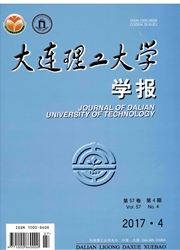

 中文摘要:
中文摘要:
在超临界反溶剂(SAS)过程中,液滴的传质行为是影响微粒尺寸和尺寸分布的关键因素.建立了有机溶液液滴与超临界反溶剂之间的传质模型,用于模拟超临界反溶剂制备超细微粒的传质过程.根据所建的模型,在不同温度和压力下,对超临界CO2和丙酮液滴进行了传质模拟研究.研究结果表明,对于CO2-丙酮溶液系统,随着压力和温度的升高,液滴直径膨胀的比率增大,液滴寿命缩短,液滴中心密度最大值增大.液滴达到饱和需要的时间增长.由于液滴膨胀和寿命是影响微粒形态分布的主要因素,最大液滴直径越大,液滴的存在时间越短,则反溶剂过程越迅速;过饱和度越大,成核速率越大,系统的扰动程度越大,因而获得的微粒尺寸就越小而且尺寸分布越均匀.
 英文摘要:
英文摘要:
The mass transfer behavior of the droplets is a key factor affecting particle size and size distribution in the supercritical antisolvent (SAS) process. To simulate the mass transfer process of making super-fine particles by SAS, a mathematical model of mass transfer between a droplet of organic solvent and a supercritical antisolvent is presented. With this model, the mass transfer between supercritical CO2 and acetone is simulated at different temperatures and pressures. The results show that the droplet experiences greater swelling, shorter lifetime, higher maximum density in the droplet center and shorter time to saturation at the center of the droplet with the increase of the pressure and the temperature. The swelling and lifetime of the droplet are the primary factors affecting particle morphology. The bigger the maximum radius is and the shorter the lifetime is, the more rapidly the antisolvent process runs. The higher the supersaturation is, the larger the nucleation velocity is got and the smaller and more uniform size particles can therefore be obtained.
 同期刊论文项目
同期刊论文项目
 同项目期刊论文
同项目期刊论文
 期刊信息
期刊信息
